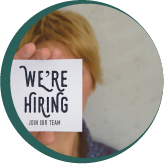 The Talent Shortage Today
The Talent Shortage Today
The ongoing talent shortage reflects a shift for both employees and employers. Now, more than ever, employees are looking for meaningful work that aligns with their values and offers flexible work options and benefits. In many cases, employers who were slow to shift to flexible work models and who have not emphasized the employee experience now feel the negative consequences of their decisions.
Employees are looking for meaningful work


New Causes of the Talent Shortage
With a large portion of the world under stay-at-home orders for over 18 months, many people reflected on their life choices, aspirations, and general well-being. Individuals’ career decisions and lifestyle choices were cast to the forefront, leading many to question their current state of life.
Amidst all this self-realization, particularly in the early stages of the pandemic, some employers were reluctant or unable to transition to remote work.1 Some industries necessitated on-site work, leading employees to work in unsafe conditions of an unpredictable and unprecedented nature.2
Simultaneously, remote employees had to adjust to the new thin line between their work and personal lives. Once employees acclimated to remote or hybrid work, the decision by some employers to fully return to on-site work in early 2021 was met with skepticism.3 Since vaccination rates had plateaued,4 some workers felt their safety had now come into question.
For many, this difficult choice led them to reconsider their post-pandemic career trajectory. Talent began looking for options that aligned with their passions and values. A large proportion of employees kept their jobs during the pandemic for stability. But at the same time, many employees started figuring out where they wanted their career to go next.
Talent began looking for options that aligned with their passions and values.

The Impact on Hiring Managers
Many employers are experiencing the effects of the talent shortage, with job posting rates being higher than pre-pandemic levels.5 The disruption caused by the Great Resignation is reflected in high attrition rates at companies.
Job postings increased notably in 2021, reflecting a shift in the job market.6 HR job postings, for recruiters and HR professionals, were up even higher than overall postings, with hiring managers actively seeking talent to meet the market’s demands.7 Employers are currently searching for talent, rather than vice versa, and as a result, employers are reassessing their talent outreach and location strategies. Hiring managers are at the center of this strategic change, hiring talent while accommodating new hybrid or remote workforce models.
During the pandemic, hiring rates were low, and the number of job postings noticeably decreased. However, with the ongoing changes in the market, the growth of remote and flexible work, and the impact of the Great Resignation, hiring managers and companies are hiring, screening, and retaining employees with a more widespread, multifaceted approach.
Many employers are experiencing the effects of the talent shortage, with job posting rates being higher than prepandemic levels.

Looking Forward: What the Talent Shortage Means
The ongoing talent shortage has led to a temporary shift in the balance of the employer-employee hiring relationship. Alongside this, the Great Resignation presented highly skilled talent with favourable job-seeking opportunities. Higher availability of jobs means that talent has been able to find roles more easily at companies that align with their values, fulfill career aspirations, and offer flexible work and benefits.
For employers, the landscape of the talent shortage will require new hiring strategies and processes to ensure that you’re retaining the ideal talent for your roles. Current job market trends indicate an influx of applications and hiring during the fourth quarter of 2021 and the first quarter of 2022. Strengthening your talent acquisition processes and implementing new remote and on-site work standards can help your company aptly prepare for the new landscape.
Additionally, employers looking to return to on-site work should identify the best workforce model for both their organization and employees. Offering hybrid options can help to increase brand awareness, is frequently cited as a key factor in talents’ decision to join a company, and effectively keeps employee morale high.
Current job market trends indicate an influx of applications and hiring during the fourth quarter of 2021 and the first quarter of 2022.

 Access Your Free Leadership & Salary Info
Access Your Free Leadership & Salary Info
Complete this form to receive special access to AppleOne’s salary and leadership guide, The SCALE. Learn how you can build a resilient workforce to stay nimble as business expands and contracts. And, get up to the minute guidance on hiring, motivating, and paying employees in today’s challenging environment.
